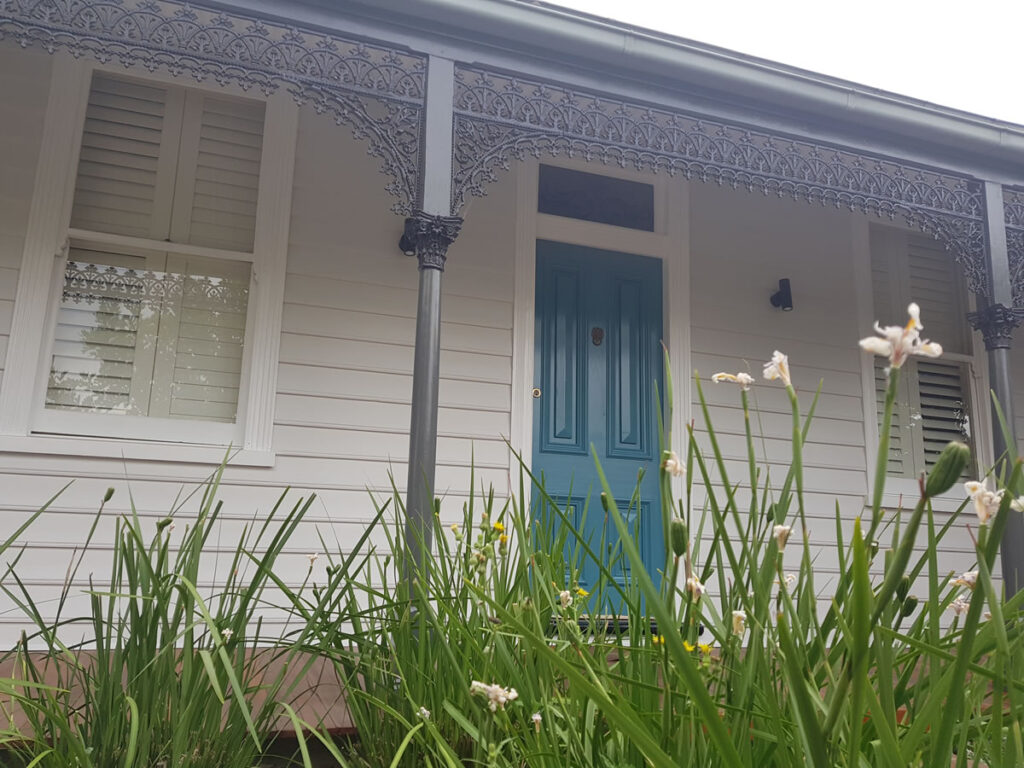As a professional painter with a deep appreciation for history and architecture, I’ve had the privilege of working on several historical homes throughout my career. These projects are more than just painting jobs; they’re opportunities to honor and preserve the past.
For owners of older homes, choosing the right colors and products is crucial to maintaining the historical integrity of your property. Here’s my guide to navigating the complexities of painting a historical home, ensuring that every choice respects its rich heritage.

Understanding Your Home’s Historical Palette
The first step in any historical home painting project is research. Historical homes were often painted with a limited palette of colors that were available or popular during the period they were built. Many paint manufacturers now offer historical color collections, which are researched and formulated to match the pigments used in past centuries. Consulting with a historical society or a preservation organization can also provide valuable insights into the original colors of your home.
Choosing the Right Colors
Historical Accuracy vs. Personal Taste: While striving for historical accuracy is admirable, it’s also important to consider your personal taste and how the colors will fit with your current lifestyle and decor. Finding a balance between accuracy and personal preference is key.
Consider the Architecture: The architectural style of your home can offer clues about appropriate color schemes. Victorian homes, for example, often feature bold and complex color schemes, while Colonial homes tend to favor more subdued, earthy tones.
Use Period-appropriate Colors: Once you’ve identified the era of your home, select colors that were common during that time. This doesn’t mean you’re limited to one or two colors; historical homes often featured a variety of shades and hues, but they were typically used in a way that complemented the architectural details and materials.
Selecting the Right Products
Quality Matters: Historical homes require high-quality paints that can provide durability and protection while also offering the right finish. Look for products specifically designed for use on older homes, which can accommodate the unique challenges they present, such as higher levels of moisture or the need for greater breathability.
Lead Safety: Many historical homes were originally painted with lead-based paint. Before beginning any project, it’s crucial to test for lead and follow proper safety protocols for removal or encapsulation. Hiring professionals trained in lead-safe practices is often the best course of action.
Choosing Finishes: The finish of the paint can also impact the historical accuracy of your project. Matte or flat finishes were most common in the past, as high-gloss finishes were harder to achieve. However, certain areas, like trim and doors, may benefit from a higher gloss for durability and contrast.
Techniques for Historical Homes
Attention to Detail: Painting a historical home often involves intricate detailing and craftsmanship. Techniques such as wood graining, marbling, and stenciling can add depth and authenticity to your project.
Preservation Over Perfection: Part of the charm of historical homes is their imperfections. While preparation and repair are important, preserving original textures and materials should take precedence over achieving a flawless finish.
Working with Professionals
While DIY can be rewarding, working with professionals who specialize in historical restorations can ensure that your project is both historically accurate and beautifully executed. Look for painters and contractors with experience in historical preservation and a portfolio of similar projects.
Final Thoughts
Painting a historical home is a journey through time. It’s an opportunity to connect with the past and preserve it for future generations. As a professional painter, I find these projects to be among the most rewarding.
They require a blend of research, craftsmanship, and respect for history that goes beyond the average painting job. For homeowners, the result is not just a beautifully painted house, but a living piece of history that continues to tell its story.
Remember, every brushstroke on a historical home is a testament to its endurance and the care of those who continue to cherish it. With the right approach, you can ensure that your home remains a vibrant link to the past, beautifully preserved for years to come.



